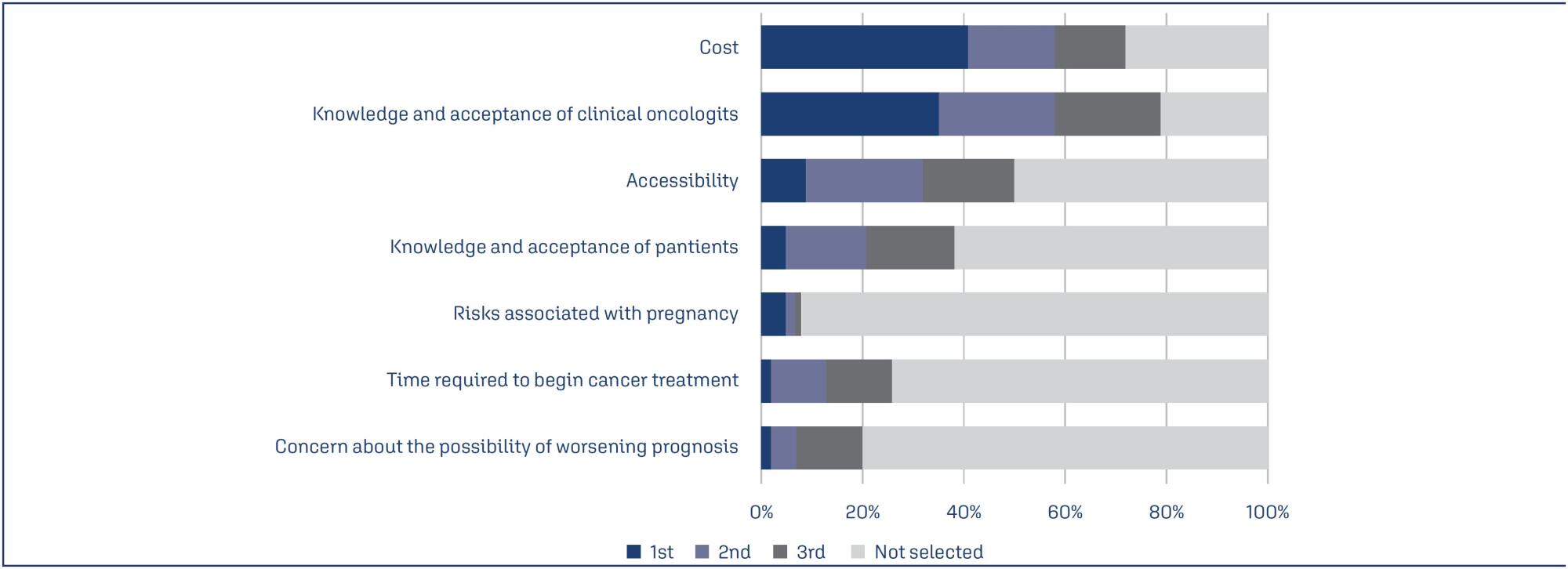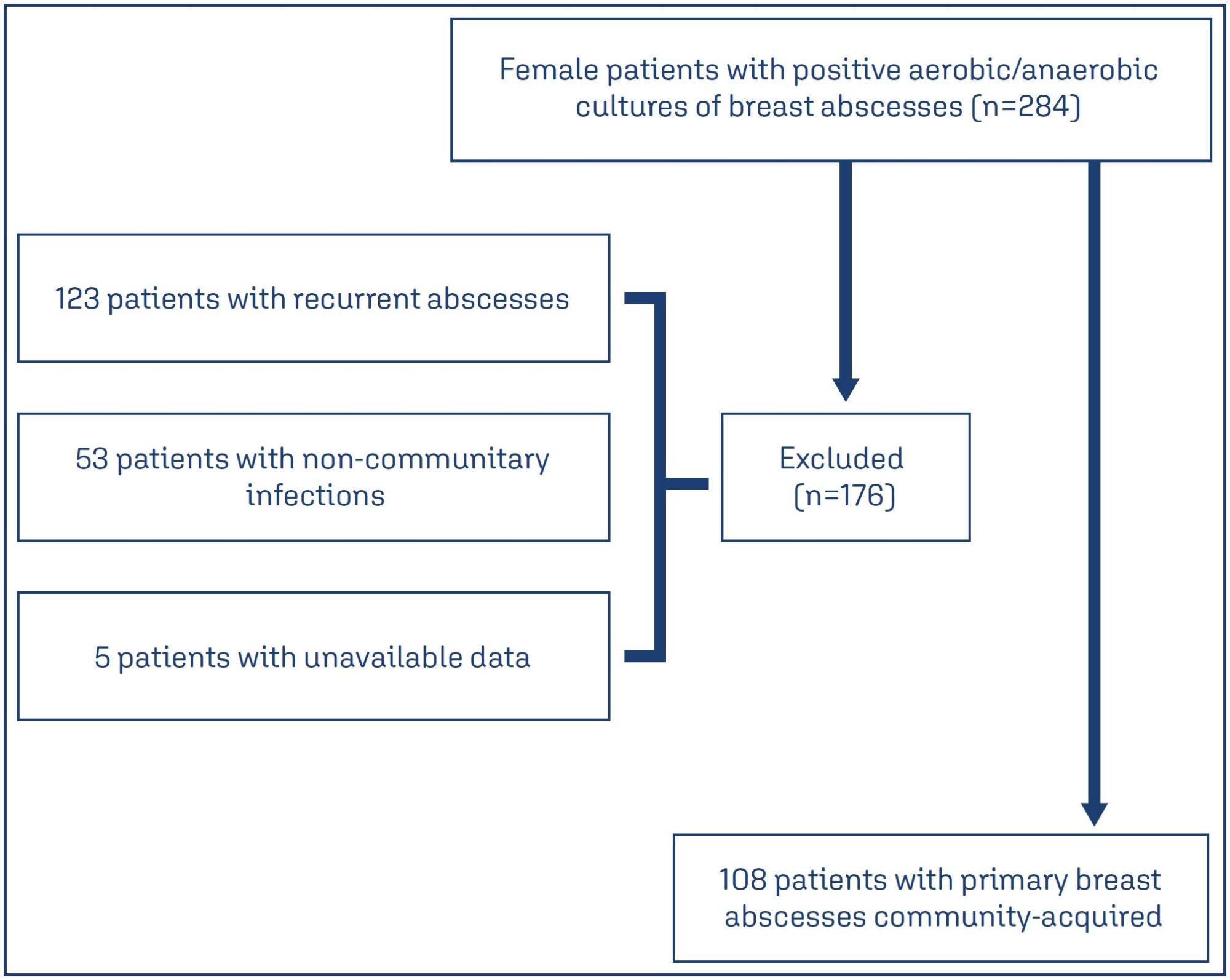Summary
Rev. bras. ginecol. obstet.. 2024;46:e-rbgo5
This study aims to correlate pelvic ultrasound with female puberty and evaluate the usual ultrasound parameters as diagnostic tests for the onset of puberty and, in particular, a less studied parameter: the Doppler evaluation of the uterine arteries.
Cross-sectional study with girls aged from one to less than eighteen years old, with normal pubertal development, who underwent pelvic ultrasound examination from November 2020 to December 2021. The presence of thelarche was the clinical criterion to distinguish pubescent from non-pubescent girls. The sonographic parameters were evaluated using the ROC curve and the cutoff point defined through the Youden index (J).
60 girls were included in the study. Uterine volume ≥ 2.45mL had a sensitivity of 93%, specificity of 90%, PPV of 90%, NPV of 93% and accuracy of 91% (AUC 0.972) for predicting the onset of puberty. Mean ovarian volume ≥ 1.48mL had a sensitivity of 96%, specificity of 90%, PPV of 90%, NPV of 97% and accuracy of 93% (AUC 0.966). Mean PI ≤ 2.75 had 100% sensitivity, 48% specificity, 62% PPV, 100% NPV and 72% accuracy (AUC 0.756) for predicting the onset of puberty.
Pelvic ultrasound proved to be an excellent tool for female pubertal assessment and uterine and ovarian volume, the best ultrasound parameters for detecting the onset of puberty. The PI of the uterine arteries, in this study, although useful in the pubertal evaluation, showed lower accuracy in relation to the uterine and ovarian volume.
Summary
Rev Bras Ginecol Obstet. 2024;46:e-rbgo23
To assess the rate of missed postpartum appointments at a referral center for high-risk pregnancy and compare puerperal women who did and did not attend these appointments to identify related factors.
This was a retrospective cross-sectional study with all women scheduled for postpartum consultations at a high-risk obstetrics service in 2018. The variables selected to compare women were personal, obstetric, and perinatal. The variables of interest were obtained from the hospital's electronic medical records. Statistical analyses were performed using the Chi-square, Fisher's exact, or Mann–Whitney tests. For the variable of the interbirth interval, a receiver operating characteristic curve (ROC) was used to best discriminate whether or not patients attended the postpartum consultation. The significance level for the statistical tests was 5%.
A total of 1,629 women scheduled for postpartum consultations in 2018 were included. The rate of missing the postpartum consultation was 34.8%. A shorter interbirth interval (p = 0.039), previous use of psychoactive substances (p = 0.027), current or former smoking (p = 0.003), and multiparity (p < 0.001) were associated with non-attendance.
This study showed a high rate of postpartum appointment non-attendance. This is particularly relevant because it was demonstrated in a high-risk obstetric service linked to clinical severity or social vulnerability cases. This highlights the need for new approaches to puerperal women before hospital discharge and new tools to increase adherence to postpartum consultations, especially for multiparous women.
Summary
Rev Bras Ginecol Obstet. 2024;46:e-rbgo33
Evaluate histological changes in testicular parameters after hormone treatment in transgender women.
Cross-section study with patients who underwent gonadectomy at Hospital de Clínicas de Porto Alegre from 2011 to 2019. Hormone treatment type, route of administration, age at initiation and duration were recorded. Atrophy parameters were observed: testicular volume, tubular diameter, basal membrane length, presence of spermatogonia and spermatids (diploid and haploid spermatozoid precursors).
Eighty-six patients were included. Duration of hormone treatment is associated with testicular atrophy and spermatogenesis arrest. Other characteristics of hormone treatment such as age of initiation, route of administration and type of treatment were not associated with testicular histological changes. Testicular volume may predict spermatogenesis arrest. Basal membrane length and tubular diameter ratio is an interesting predictor of germ cell presence.
Cross-sex hormone treatment affects testicular germ cell presence. Basal membrane length and tubular diameter ratio reduces inter variability of measurements and better exemplify how atrophic seminiferous tubules are. Fertility preservation should be addressed by healthcare providers in order to recognize gender affirming treatment impact on transgender health.
Summary
Rev Bras Ginecol Obstet. 2024;46:e-rbgo32
To ascertain how screening for preterm birth is performed among obstetricians working in public and private practice in a middle-income country.
Cross-sectional study of 265 obstetrician-gynecologists employed at public and private facilities. An online questionnaire was administered, with items designed to collect data on prematurity screening and prevention practices.
The mean age of respondents was 44.5 years; 78.5% were female, and 97.7% had completed a medical residency program. Universal screening (i.e., by ultrasound measurement of cervical length) was carried out by only 11.3% of respondents in public practice; 43% request transvaginal ultrasound if the manual exam is abnormal, and 74.6% request it in pregnant women with risk factors for preterm birth. Conversely, 60.7% of respondents in private practice performed universal screening. This difference in screening practices between public and private practice was highly significant (p < 0.001). Nearly all respondents (90.6%) reported prescribing vaginal progesterone for short cervix.
In the setting of this study, universal ultrasound screening to prevent preterm birth was used by just over half of doctors in private practice. In public facilities, screening was even less common. Use of vaginal progesterone in cervical shortening was highly prevalent. There is an unmet need for formal protocols for screening and prevention of preterm birth in middle-income settings.
Summary
Rev Bras Ginecol Obstet. 2024;46:e-rbgo35
We aimed to translate and determine cultural validity of the Vaginal Changes Sexual and Body Esteem Scale (VSBE) for Brazilian Portuguese language in postpartum women who underwent vaginal delivery with or without perineal laceration and cesarean section.
A cross-sectional study conducted virtually, with online data collection through a survey with 234 postpartum women of 975 that were invited. Clinical, sociodemographic, and psychometric variables from the VSBE questionnaire were analyzed (content validity index, internal consistency, test-retest reliability, construct/structural and discriminant validity). Multivariate analysis was performed to explore associated factors with the presence of perineal laceration.
One-hundred fifty-eight women experienced vaginal delivery, of which 24.79% had an intact perineum, 33.33% had perineal laceration, and 9.4% underwent episiotomy; and 76 participants had cesarean sections. Women with perineal laceration were older, presented dyspareunia and previous surgeries than women without perineal laceration (p<0.05). For VSBE, a high internal consistency (Cronbach's α > 0.7) was observed, but it did not correlate with Body Attractiveness Questionnaire and Female Sexual Function Index; however, it correlated with the presence of women sutured for perineal laceration. Moreover, VSBE presented good structural validity with two loading factors after exploratory factor analysis. VSBE also demonstrated discriminant validity between the presence or absence of perineal laceration. The presence of urinary incontinence (UI) (OR=2.716[1.015-4.667];p=0.046) and a higher VSBE total score (OR=1.056[1.037-1.075];p<0.001) were the only factors associated with perineal laceration.
Vaginal Changes Sexual and Body Esteem Scale demonstrated appropriate translation and good internal consistency, discriminant/construct validity and reliability. Vaginal Changes Sexual and Body Esteem Scale total score and presence of UI were associated with women that underwent perineal laceration.
Summary
Rev Bras Ginecol Obstet. 2024;46:e-rbgo25
Fertility preservation is a priority in oncology for female cancer patients. However, there is a lack of communication between infertility specialists and oncologists. This study aimed to evaluate infertility specialists’ perceptions and experiences regarding fertility preservation.
Conduct an online survey to profile infertility specialists. Participants were infertility affiliated with the Brazilian Federation of Gynecology and Obstetrics Associations (FEBRASGO). The specialists received an online survey, which response rate were 30.9%, most of whom were in southern and southeastern. The survey consisted on 14 questions about the infertility specialists’ location, techniques in clinical practice, treatment successful rate, patients idea, etc.
The average experience in human reproduction were 15.5 ± 10.2 years (mean ± standard deviation, range 1-40). Among reproductive-aged female cancer patients recommended for fertility preservation, 60.3 ± 28.8% (range 10-100%) underwent preservation procedures. Main barriers were cost (41%), oncologists’ knowledge or acceptance (35%) and accessibility (9%). Most infertility specialists (58%) considered 40 years the limit for fertility preservation. Leukemia, lymphoma, breast and ovarian cancers were prioritized for fertility preservation, while lung, thyroid, gastric, and brain cancers were less relevant.
This is the first Brazilian study about infertility specialists’ perceptions on oncology patients access to fertility preservation. These patients primarily receive treatment in the public health system, while infertility specialists mainly work in the private healthcare. This healthcare mode is currently fragmented, but integrating these experts is enhancing patient access to fertility preservation. Studies on this topic are still warranted.

Summary
Rev Bras Ginecol Obstet. 2024;46:e-rbgo31
To compare Transforming growth factor beta-1 (TGF-β1) expression in patients with and without adenomyosis.
A prospective design was performed including 49 patients submitted to hysterectomy. Immunohistochemistry was performed on anatomopathological samples staged in paraffin blocks from patients with and without adenomyosis. The sample contained 28 adenomyosis cases and 21 controls. Student's t-test and multivariate logistic regression tests were used for statistical analysis. Associations were considered significant at p < 0.05.
We found no significant association between adenomyosis and: smoking (p = 0.75), miscarriage (p = 0.29), number of previous pregnancies (p = 0.85), curettage (p = 0.81), pelvic pain (p = 0.72) and myoma (p = 0.15). However, we did find a relationship between adenomyosis and abnormal uterine bleeding (AUB) (p = 0.02) and previous cesarean section (p = 0.02). The mean TGF-β1 intensity (mean ± SD) in the ectopic endometrium of women with adenomyosis showed no significant association (184.17 ± 9.4 vs.184.66 ± 16.08, p = 0.86) from the topic endometrium of women without adenomyosis.
TGF-β1 expression was not increased in the ectopic endometrium of women with adenomyosis.

Summary
Rev Bras Ginecol Obstet. 2024;46:e-rbgo34
The aim of this study is to evaluate the etiological profile and antimicrobial resistance in breast abscess cultures from patients from the community, treated at a public hospital located in Porto Alegre, Brazil.
This is an retrospective cross-sectional study that evaluated the medical records of patients with bacterial isolates in breast abscess secretion cultures and their antibiograms, from January 2010 to August 2022.
Based on 129 positive cultures from women from the community diagnosed with breast abscesses and treated at Fêmina Hospital, 99 (76.7%) of the patients had positive cultures for Staphylococcus sp, 91 (92%) of which were cases of Staphylococcus aureus. Regarding the resistance profile of S. aureus, 32% of the strains were resistant to clindamycin, 26% to oxacillin and 5% to trimethoprim-sulfamethoxazole. The antimicrobials vancomycin, linezolid and tigecycline did not show resistance for S. aureus.
Staphylococcus aureus was the most common pathogen found in the breast abscess isolates during the study period. Oxacillin remains a good option for hospitalized patients. The use of sulfamethoxazole plus trimethoprim should be considered as a good option for use at home, due to its low bacterial resistance, effectiveness and low cost.

Search
Search in:
breast (42) breast cancer (42) breast neoplasms (95) Cesarean section (72) endometriosis (66) infertility (56) Maternal mortality (43) menopause (82) obesity (58) postpartum period (40) pregnancy (225) Pregnancy complications (99) Prenatal care (68) prenatal diagnosis (50) Prevalence (41) Quality of life (51) risk factors (94) ultrasonography (79) urinary incontinence (40) women's health (48)